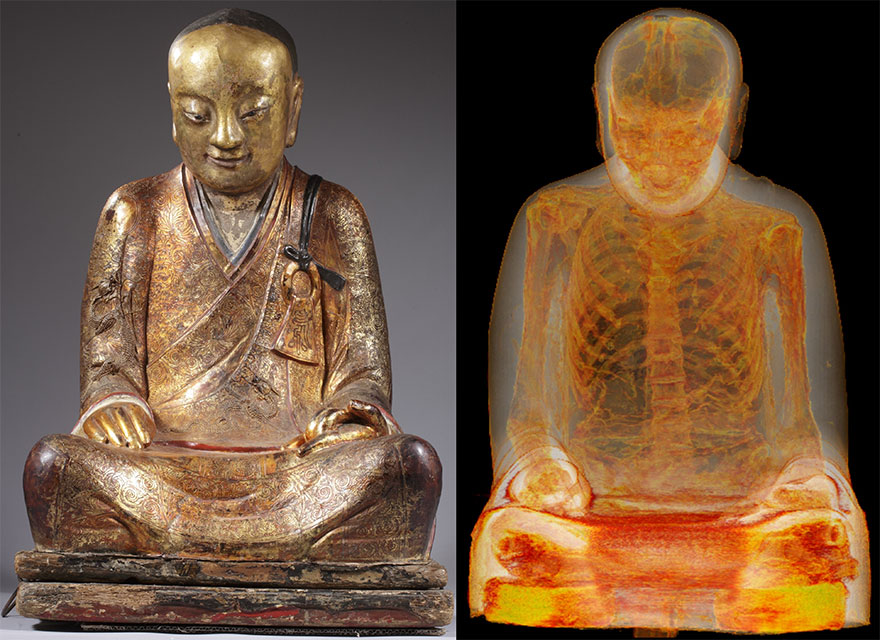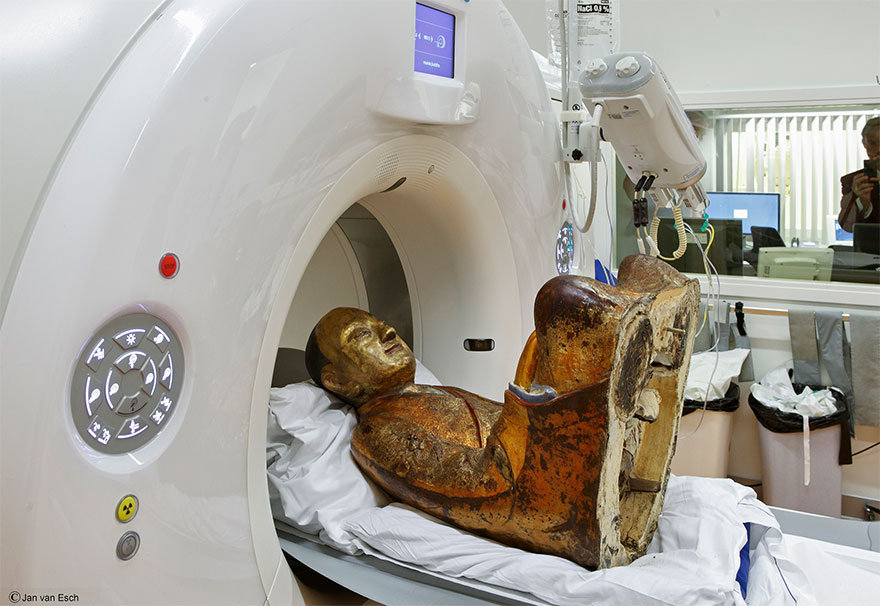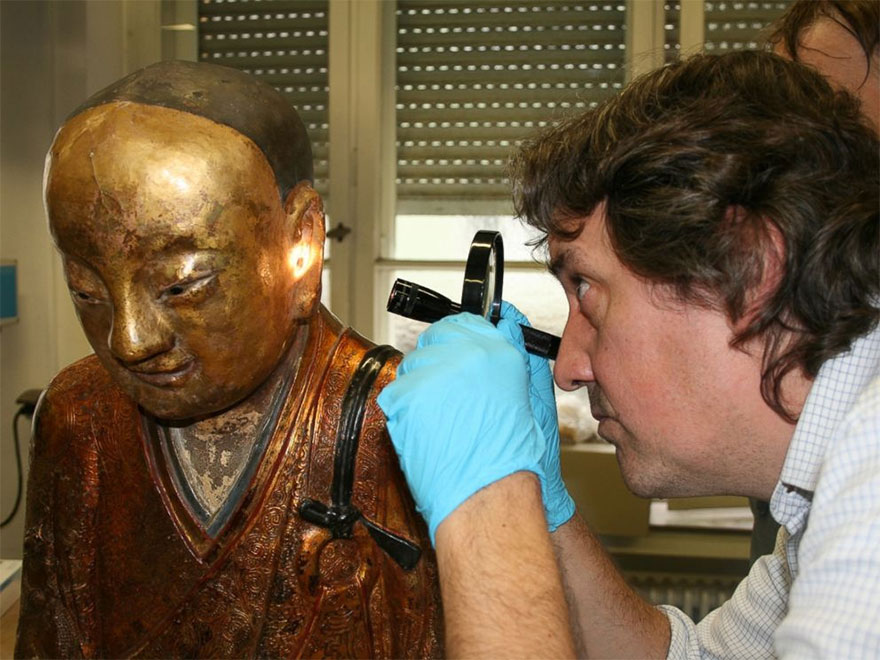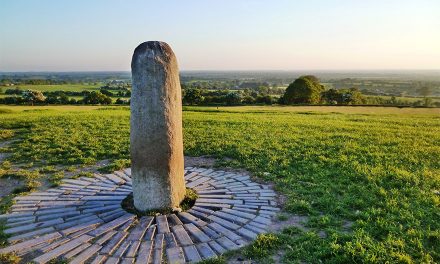
Scientists made a bizarre discovery when they took a CT scan of an ancient Buddha statue from China. Inside was a mummy sitting in the same lotus position. Further investigation revealed that the organs had been removed and replaced by scraps of paper with Chinese writing on them.
The Buddha statue, dating back to 1100 CE, belongs to the Drents Museum in the Netherlands and is currently on loan to a museum in Budapest.
“On the outside, it looks like a large statue of Buddha,” the museum said in a release quoted by Discovery News. “Scan research has shown that on the inside, it is the mummy of a Buddhist monk who lived around the year 1100.”
Experts believe that the mummy inside the statue is of Buddhist master Liu Quan, a member of the Chinese Meditation School.
After the initial scan showed the skeleton inside the statue, researchers took it to the Meander Medical Center in Amersfoort and carried out an endoscopy and additional CT scans. That is when they found the missing organs and, among a lot of unidentified material, scraps of paper with Chinese script on it. Further research is in progress.
The Museum is of the view that probably the Buddhist master ‘self-mummified’ himself. This is a long painful process involving starving oneself progressively for several years.
Self-mummification used to be a mainly Japanese practice. Discovery News describes this tortuous process in the following way. For 1000 days the monk would eat only nuts and seeds, reducing body fat to a minimum. Then, for another 1000 days a diet of roots and barks would be consumed. In the last stages, the monk would drink a poisonous tea made from the sap of the Japanese varnish tree to induce vomiting and elimination of body fluids. The toxic nature of the infusion probably helped kill off bacteria too.
Then, the skeletal monk was put in a stone tomb just fitting around the body. An air tube and a bell were provided. Every day the monk would ring the bell indicating that he was alive. When the bell stopped ringing, it was known that he had died. His mummified body would then be removed after another 1000 days and preserved. Only a handful of monks achieved this stage after the long and grueling process.
It is unclear when and how the organs were removed from this mummy. Further research is going on.














Most insane–what could possibly be gained by such a practice!
We shouldn’t criticize them. I don’t know much about why this is done, but there is probably some reason as to why this practice is done.
Buddhists are strictly against harming ttheir bodies and committing suicide. More research must be done.